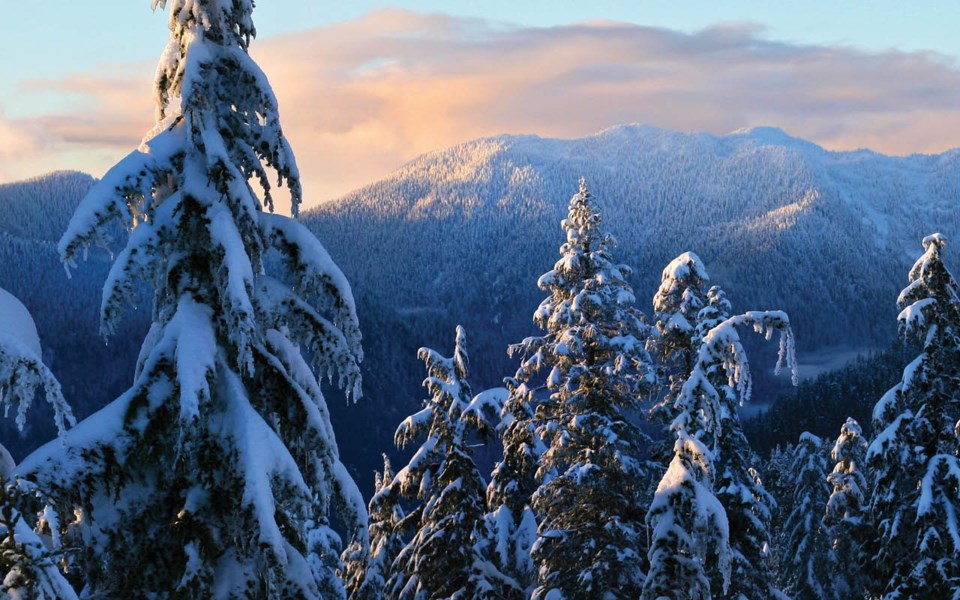I love being in the trees in winter.
Whether Japan's beech forests, Europe's larch, Norway's dwarf birch, B.C.'s conifers, or Aspen's ... well, aspens ... skiing in the trees offers a different aesthetic than skiing other natural features such as bowls and chutes. And eastern tree skiing—lacking the West's fuzzy warmth and cathedral spires—is different altogether.
Growing up skiing in Ontario, Quebec and Vermont, I spent a lot of time in the trees, whether downhill or cross-country. In addition to being a way of enjoying the simple beauty of a winter day, you could commune with a forest at its most essential—far outside of the cacophonic pageantry of summer. I'll admit that eastern hardwoods weren't for everyone: they were the rough bouncers at an exclusive club ready to repel anyone who didn't belong, and a girded honour guard to welcome those who did. But if you liked powder at all it was a club worth joining.
Skiing hardwood forests feels like moving through a state of suspended animation, though there's plenty going on—stories being spun in the wood of hibernating critters and burrowing insects, of hormones coursing through roots ready to send sap racing upward at the first hint of warmth. And yet save for an occasional creaking in the wind, all this industry is carried out in silence. Moving among such trees in winter is like entering a realm populated by beings whose sentinel nature is their very allure—as if they both conjure experience and bear witness to it. Perhaps they do. I'm fond of noting that the human genome contains some 20,000 genes, while a poplar tree has 45,000. What does it mean when the complexity of the human brain is governed by fewer genes than a block of wood? Perhaps only that when it comes to DNA, wisdom, stoicism and vigilance may be more hard-won than mobility.
In British Columbia, where I now live, not only do I love skiing the trees, but I also enjoy the myriad forms they take—from hunched snowghosts to towering alabaster arrows of improbable symmetry. It's easy to view such statuesque embodiments as living things that have simply stalled out from daily existence, their weighted encasements a measure of the force of winter—as in the old Lewis Carrol quote: I wonder if the snow loves the trees and fields, that it kisses them so gently? And then it covers them up snug, you know, with a white quilt; and perhaps it says "Go to sleep, darlings, till the summer comes again." But such a view would be a mistake.
For B.C. snowriders, trees are shelter in the storm; for the snow that finds its way into them, they are filter and preservative, minimizing the effects of wind and sun. Microclimates also help: a mountain that spends a lot of quality time in the cloud deck, its peak perpetually shrouded, tends to pull down significantly more snow than neighbouring peaks. Where such places are found (and I'd count Whistler among them), it's the fluffy turns beneath the branches that rule the mountain's personality.
Hitting treeline from the alpine is an interesting introduction—zigzagging around krumholtz and other tightly packed manifestations. But as you move downslope and larger trees prevail, things open up—though never enough to make the next move completely obvious. And this is where the "game" takes over. Tree skiing, even where you can see around them, is still all decisions, discovery and endless permutation: make a turn around one, a new line comes into view and suddenly everything looks different; your next turn repeats the trick; then it happens again, much like a high-speed video game testing both reflexes and processing powers. All the while the slope uncoils over the natural contours of the mountain, connected by lines that follow the logic of topography and water—a logic, you learn, that the trees follow as well.
For many years I simply skied through these snowclad trees, paying little attention to what I saw as a silent plight for spring to arrive. But a few years ago, some reading on tree biology delivered a different impression.
The statuesque nature of B.C.'s mountain trees, it turns out, is less about current weather than millions of years of evolution and the selective power of ice ages. You see, the west coast's firs and spruce and cedar—even mighty redwoods and sequoia—are snow trees, exquisitely evolved in form and function to deal with and make use of the white stuff. With a heavy load, their apical symmetry sheds just enough to allow the branches to bend but not break; in cold weather they'll hold enough snow to protect buds; and melting snow from branches drips in a circle, feeding roots that require a steady moisture supply over winter. Indeed, the entire arc of a snow tree's spring, summer and fall are in play as you ski by it in winter.
In a sense then, these particular trees "like" snow. And that makes me love them even more.
Leslie Anthony is a Whistler-based author, editor, biologist and bon vivant who has never met a mountain he didn't like.




